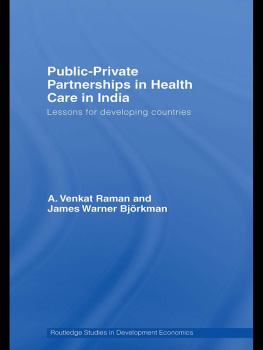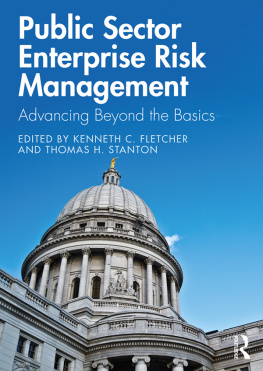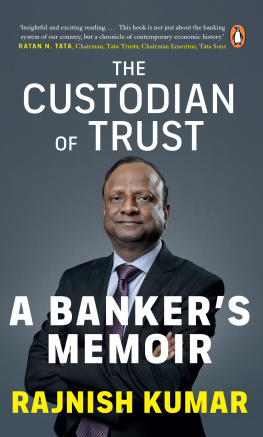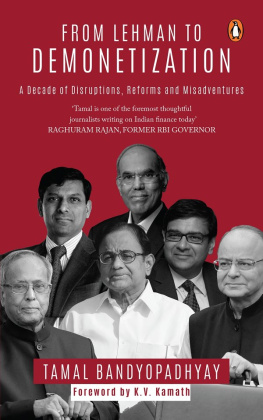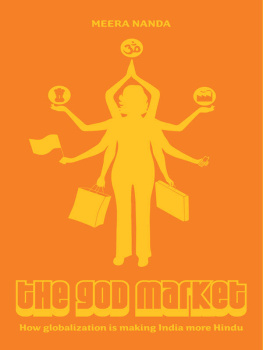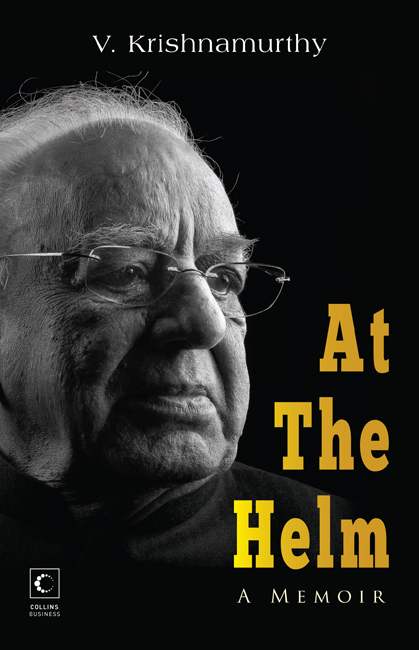
AT THE HELM
A Memoir
V. Krishnamurthy

Dedicated to the memory of my wife Rajam,
who continues to be my strength and inspiration.
CONTENTS
I t gives me immense pleasure to write this Foreword to the memoir of Dr V. Krishnamurthy. The joy arises from many aspects of his personalitythe roles he played and the invaluable contributions he made to Indian industry, the public sector, government, national policy and the social sector.
The single most important aspect of his career is that he has been an outstanding chief executive officer (CEO) of Indian industry. He compares most favourably with other leading Indian CEOs of his generation, including giants like Sumant Moolgaonkar of Telco, Prakash Tandon of Hindustan Lever, Ajit Haksar of ITC and others. It was his mission to work in and for the Indian economy. If he had chosen to work globally, in my view, he would have matched, if not exceeded, the performance of the worlds big CEOs such as Jack Welch of GE, Percy Barnevik of ABB, Akio Morita of Sony and others at that level.
He has shown greater versatility than most comparable Indian and foreign CEOs. He first built power equipment manufacturer BHEL in the capital goods sector. Then, he brought to life Maruti in the automobile and consumer durables sector. He went on to turn around steel giant SAIL. Even any one of these successes would have been enough to qualify him as a great CEO. Two of them would have made him the best Indian CEO. All three make him virtually beyond reach and comparison.
Krishnamurthy has been a path-breaking CEO in both the public and private sectors. In BHEL, he did many things considered impossible not only by his predecessor but also by Mrs Indira Gandhi, the then prime minister. He demonstrated, for the first time in India, the ability of a CEO to lead a large, multi-unit, high technology, capital intensive, long gestation company to high performance. He did this through professional management interventions such as Indias first formal corporate plan, a multi-functional corporate structure, delegation with accountability, budgetary control, performance appraisal and other management systems.
His success in BHEL was rewarded by his elevation as secretary to the Government of India in the department of heavy industries in the ministry of industry. While having to manage new political and bureaucratic relationships in his ministry and with other ministries, he brought much needed management concepts and practices to the ministry. Due to differences with the minister, he had to leave office without completing his term. But his contributions to Indian industry and the public sector were to continue.
Prime Minister Mrs Indira Gandhi requested him to revive the moribund Maruti. He ran Maruti, a joint venture with Suzuki Motors of Japan, virtually as a private enterprise. Without any prior exposure to the automotive sector, he blazed new trails. He not only saved Maruti but also transformed the entire automobile industry in India. Nothing less. He gave the Indian car buyer an undreamt-of world class product and service experience. Even if the core technology came from Suzuki, he led the absorption, skill training, vendor and dealer development, etc. to produce quality cars which not only delighted Indian customers but were also taken by Suzuki to its export markets. He revolutionized car sales and service in India. He also fostered the growth of many private sector auto component manufacturers, many of whom have since grown, been listed on the stock market and delivered high value to all their respective stakeholders.
Even as he was blazing new trails in Maruti, the new, young prime minister, Rajiv Gandhi, wanted him to turn around SAIL. Krishnamurthy brought about several deep changes in the attitudes, culture, technology, and systems of SAIL. He made the huge organization sensitive, for the first time, to issues of customer satisfaction, quality, timely delivery and competitive pricing. This was a revolution for a near monopoly producer of steel.
When he became chairman of BHEL, he was in his forties. This was a welcome departure from the then general Indian organizational culture and public sector ethos that one had to be older and more senior to become chairman. Another characteristic of the public sector at that time was blind compliance with the directions, orders, instructions, hints and even unstated desires and expectations of civil servants and the minister concerned. The typical PSU CEO was involved mostly in project implementation and, after commissioning, he was preoccupied with production. Without being insubordinate in any way, Krishnamurthy changed the culture by simply taking charge, giving comfort to employees and delivering results through his leadership and managerial competence. In a top-down milieu, where planning for PSUs was done primarily by the Planning Commission with some involvement of the ministry, Krishnamurthy took the bull by its horns and produced corporate plans for all the three PSUs he helmed. It was not just a statistical extrapolation but a strategic plan.
There was also a feeling in the public sector in the 1970s that each enterprise had to be small to be manageable by Indian executives, who were perceived to have limited managerial experience and talent. Krishnamurthy changed that by demonstrating that BHEL can be run more successfully as a multi-unit enterprise under the same corporate management. The PSU head office was then very lean. It consisted mainly of the CMD and the financial adviser and chief accounts officer (FACAO). In the PSU ethos, the FACAO was a very powerful position, sometimes even more so than the CMD. If the FACAO disagreed on any issue of investment or expenditure, the matter had to go to the board. The power was primarily negativeto delay and even stop things. The FACAO could not be a prime mover of strategy and operations in the PSU.
Krishnamurthy resolved this problem in many innovative ways. He inspired the boards confidence, and even admiration, by presenting corporate plansa meaningful big picture within which all investments and major expenditures could be seen in their proper perspective and approved in principle. Later, in SAIL, he started the system of signing memorandums of understanding with the ministry. This concept killed two birds with one stonehigh autonomy for the PSU management as well as accountability with specified deliverables.
Krishnamurthy also created a new organizational structure essential for the implementation of key principles such as setting goals for units, policy guidance, delegation, accountability, MIS, management by exception, performance-based rewards and recognition, etc. He created, for the first time in the public sector, all relevant functional departmentsmarketing, operations, purchase and HR besides the already existent finance department. He also set up major, central R&D facilities in BHEL, Maruti and SAIL.
CEOs and managers, both in the public and private sectors, can continue to learn much from Krishnamurthy and his work in the two PSUs, BHEL and SAIL, the virtual private sector joint venture Maruti, as well as his supportive role as secretary, heavy industries. An important lesson is to keep learning at every opportunity, growing and widening ones managerial repertoire. Krishnamurthy was an avid and fast learner. Even during short spells of postings and projects, he soaked in a great deal. This began with his stint in the Tamil Nadu Electricity Board and continued through the Planning Commission, BHEL, Maruti, the heavy industries department, SAIL and later. He learnt from all the relevant stakeholders. Examples are his learning from Appadurai in TNEB, national leaders like Nehru and Indira Gandhi, planners like Mahalanobis, collaborators like the Russians, Czechs, Americans, Germans, Japanese, and others.
Next page

